When I took painting classes, color mixing was a skill that was taught. It was part of the process of learning to paint. Needle felters learn how to felt, but we don’t learn how to mix wool colors. We buy them. Learning how to blend wool colors reliably is a skill I’d like to gain. It will also make me a more well-rounded fiber artist.
What result am I hoping for?
I would like to have a smaller stash with more diverse breeds of wool. I’m not going to throw away the colors or breeds of wool I already own. I’ll use them. But I hope I won’t have to replace most of them when I run out.
Instead of buying a dozen different blues, I would like to buy 2 to 4. Working with a limited wool palette or set of colors would simplify choosing color for my projects. Maintaining a wide range of colors in my stash makes selecting colors frustrating and overwhelming.
If I’m honest with myself, it also feels wasteful. Ideally, the needle felting industry would provide wool in colors that we could rely on to be consistent (like paint companies do). A few do but most are all over the map. As I mentioned in my first wool paintouts post, I understand why. But decent needle felting wool is not inexpensive. I want to find a way to buy the right colors instead of buying all of them. 🙂
It’s also a space issue for me. I have bins of wool…lots of bins. But I never seem to have the color I need when I’m making an animal! It’s frustrating and I no longer think the solution is to buy more. There has to be a better way. Hopefully, learning how to work with color more effectively will solve these problems.
An opportunity to explore new ways of using color with wool
I’m already dipping my toe into dyeing wool (more on that soon). That’s another way I’m exploring finding a palette that works for me.
Dyeing the right palette will also open the door to working more with heritage and rare breed wool. These wools are generally only available in natural colors. I don’t expect them to be offered dyed. Shepherds who raise these sheep are focused on raising healthy, happy sheep. But if I feel confident that I can dye that wool, it would make it easier for me to purchase and use heritage and rare breed wool.
Since I’ve been thinking about needle felting in relation to painting, I’ve started wondering if some painting techniques might work with wool. For instance, you can imitate making a wash of color or glazing by using thin veils of a wool color. Glazing is another way painters mix colors.
Maybe that would work with wool? Would it help reduce the heathered look that results from hand blending? I’m not sure. I’d like to try this and experiment with other ways of mixing wool color after I complete my wool paintouts.
Speaking of completing wool paintouts, here are the reds!
I’m continuing to use DHG’s Maori line of wool for my paintouts. I chose Passion as a cool red and Chinese Lacquer (“Lake” at some suppliers) as a warm red.
I started by placing the color I’m working with in each of the rectangles on the far left. Next, I added the colors on the far right. I’m using DHG Snow as my white, a DHG complement (Ivy for Passion and Leaf for Chinese Lacquer), and DHG Dark for the black.
Then I worked on each row. I mixed the gradient steps for red to white, then red to green, and finally red to black.
These two reds were distinctly different which made these wool paintouts a joy to work on. The reds were strong compared to the yellows in my last post. It took a very small amount of color to shift from white.
It was also interesting to see how Passion mixed with black created some beautiful cranberry hues. Chinese Lacquer mixed with black veered more toward reddish browns.
Both reds mixed with their compliments delivered lovely neutrals and olives. I’ve been using compliments of the same color temperature for this first round of primary color paintouts (red, yellow and blue). But once I start working on the secondary colors (green, purple and orange), I’ll choose the opposite color temperature. I’m curious to see how that will impact the hues.
For now, that will have to wait. Next I’ll be working on a cool and warm blue. And I’ll share the physical process I use to make each wool paintout. It’s easier than you might think!


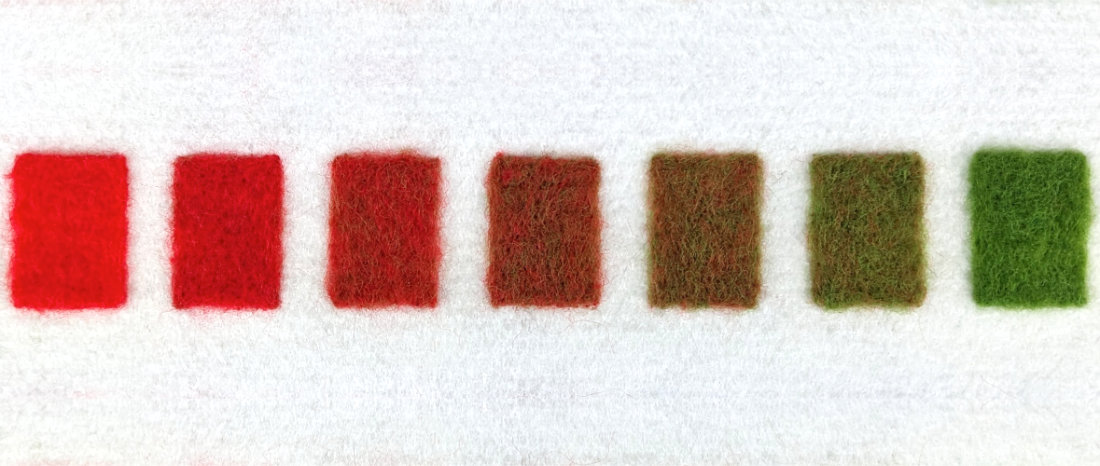


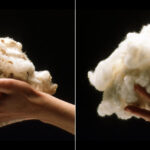

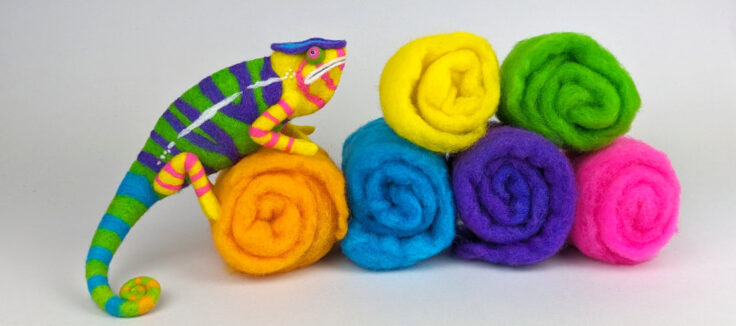 Dyeing wool with an Easter Egg Decorating Kit to make a Chameleon
Dyeing wool with an Easter Egg Decorating Kit to make a Chameleon 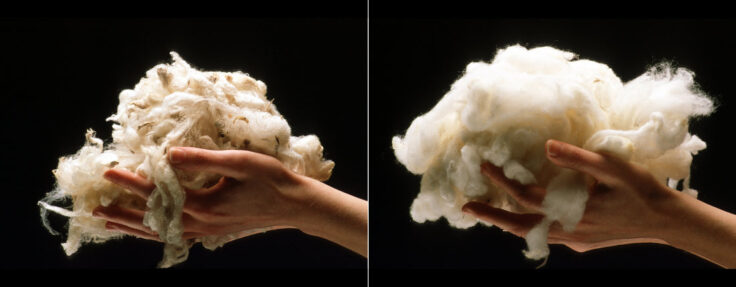 Can you needle felt unwashed wool?
Can you needle felt unwashed wool? 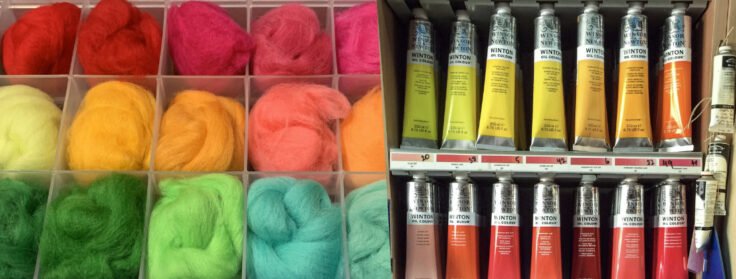 Will wool paintouts level up my use of color?
Will wool paintouts level up my use of color?  Is needle felting an expensive hobby?
Is needle felting an expensive hobby?